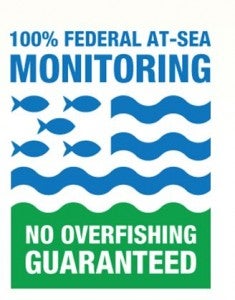 The conservation and economic benefits of the Pacific groundfish catch share program are steadily coming into focus. In the first year of the program, those benefits included higher revenues and dramatic reductions in the number of discarded fish (See NOAA’s first year report here). With catch shares, fishermen are taking advantage of a year-round, flexible fishing season, the ability to “fish to the market,” and new incentives to use the most selective fishing methods possible.
The conservation and economic benefits of the Pacific groundfish catch share program are steadily coming into focus. In the first year of the program, those benefits included higher revenues and dramatic reductions in the number of discarded fish (See NOAA’s first year report here). With catch shares, fishermen are taking advantage of a year-round, flexible fishing season, the ability to “fish to the market,” and new incentives to use the most selective fishing methods possible.
These economic and conservation gains would not be possible without a strict requirement of the new catch share program: 100% monitoring. An impartial federal observer now observes fishing operations on board West Coast groundfish boats and accounts for every fish caught. As Brad Pettinger, director of the Oregon Trawl Commission, put it:
The fishery observers that trawlers are now required to have onboard take up scarce space and mean another mouth to feed, but they provide the assurance of 100% catch accountability – no fishery in the world has a higher standard – along with the reliable scientific data that fishery managers will need in order to adjust allowable catches in the future.
Daily rates for fishery observers run in the hundreds of dollars[1], which translates into a major economic commitment by West Coast fishermen. Now there is a way for fishermen and seafood processors to leverage that investment and, hopefully, increase the market value of their fish.
A new seafood label developed by EDF and Central Coast Seafood in California recognizes the commitment of the West Coast groundfish fleet to full accountability. The label, which reads “100% Federal At-Sea Monitoring: No Overfishing – Guaranteed”, distinguishes 100% monitored products.
This label is a great initiative for two reasons.
First, it recognizes fishermen who have made a commitment to sustainable fishing by entering the catch share program and supporting the presence of federal monitors – 100% of the time. These federal monitors ensure that scientifically established catch limits are never exceeded.
Second, the label and its supporting website gives consumers a better understanding of where their fish comes from, and the ability to choose a catch share fish over a less sustainable fish. Currently, a grocery store can’t distinguish catch share-caught sole, cod, sablefish, or other groundfish from fish from less well regulated fisheries. The new label gives vendors, restaurants, and individuals the power to vote for catch shares and accountability, by purchasing 100% monitored products.
And several seafood industry trade publications like Fish Information and Services are also recognizing the value of the label and have covered the story. A leading West Coast seafood processor has also expressed interest in using the label for its catch share-caught seafood products.
“Ecolabels” can be confusing, but we think this one is clear: choose fish from a catch share program that is 100% monitored, and stand with American fishermen in a program that sureties “no overfishing.”
To learn more, or to find out where to buy 100% monitored fish, email NoOverfishing@edf.org.
[1] Currently, fishermen are operating under an observer cost-sharing arrangement with the federal government, which is being phased out. The fleet is slated to bear full responsibility for these costs by January 1, 2015, by which time the day-rate is expected to be upwards of $450/day.









